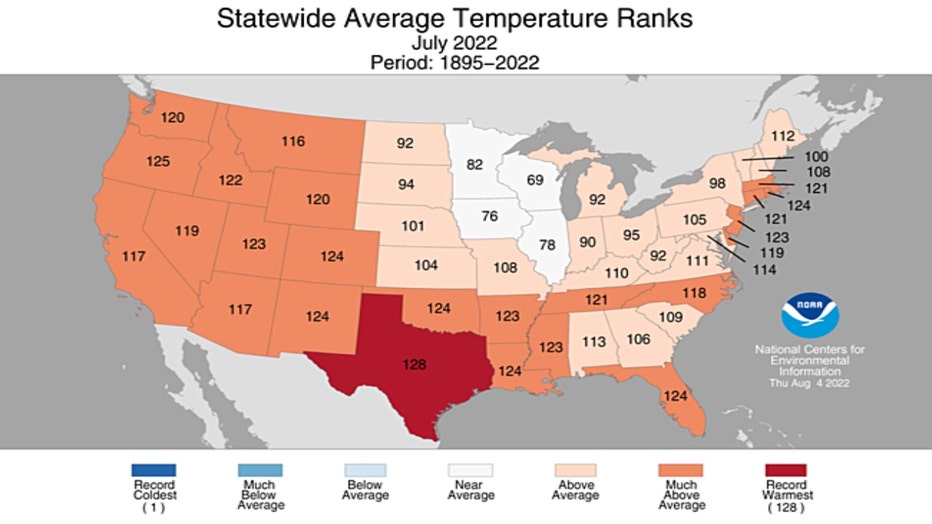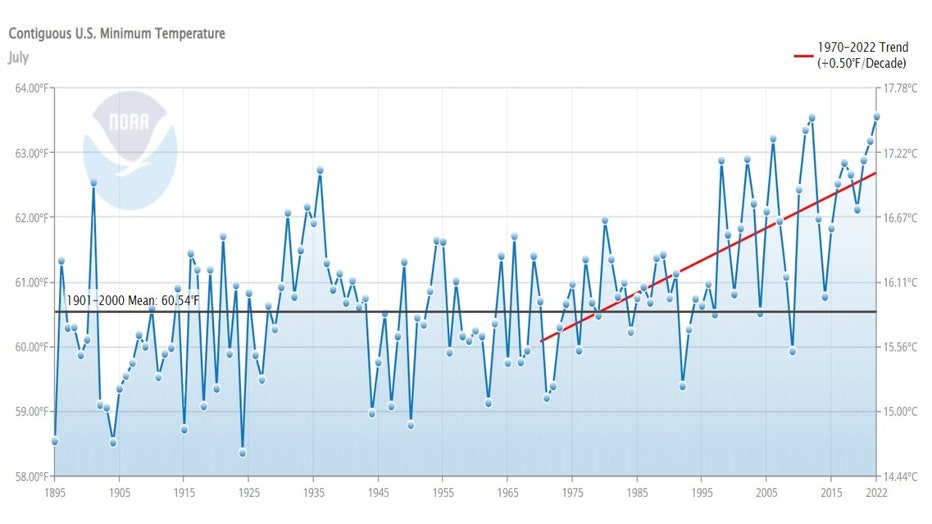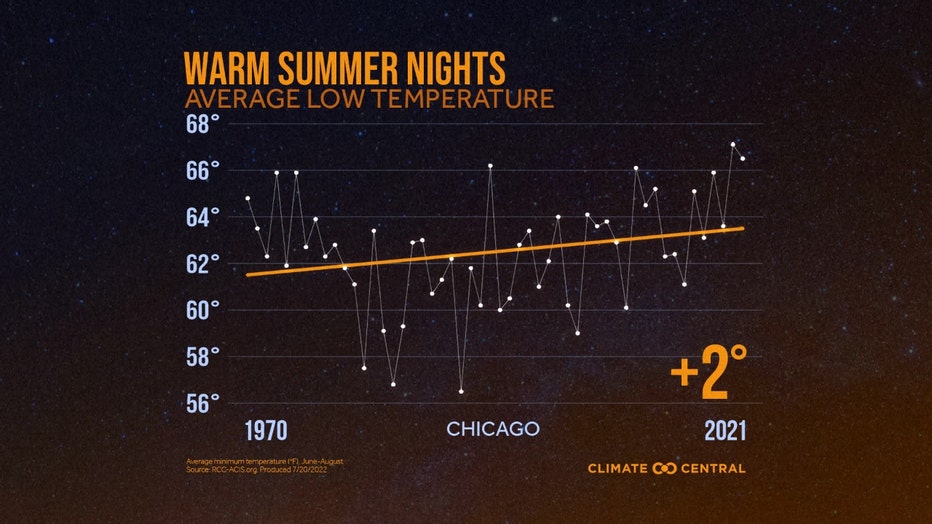July's heat was most noteworthy at night
CHICAGO - This past July sizzled for most of the country. With an average temperature of 76.4 degrees, it was nearly three degrees above average and ranked as the third-warmest July in the 128-year record for the United States.
Notice the lack of blue on the map below. Most of the country was either above average, much above average or at its record warmest.
So far, at least 30 locations across the country saw all-time record highs in July. There were 18 spots that tied their previous all-time record highs too.

SUBSCRIBE TO THE FOX 32 YOUTUBE CHANNEL
The heat was highest in the southern and western states, with several states along the east coast also seeing unusually warm weather. Many of the states in these regions experienced a top ten warmest July. For Texas, it was the hottest July on record.

The heat in July was most noteworthy at night. The average daily minimum temperature for the month was 63.57 degrees, the warmest for any month on record.
More and more sultry nights are a sign of danger, and they are becoming more frequent because of climate change. One of the major discoveries from Chicago's deadly heatwave of 1995 was that without a significant enough drop in temperatures at night, the mortality rate can climb dramatically. Our bodies can't get enough relief to make it through the scorching heat faced during the daytime.
Summer minimum (nighttime) temperatures have warmed nearly twice as fast as summer maximum (daytime) temperatures since records began back in 1895. Overnight lows have warmed at a rate of 1.58 degrees per century.
Nine out of 10 months with the warmest average daily lows have occurred since 1997, or in the past 25 years.

A recent study predicted the average intensity of "hot night events" will almost double by 2090 in East Asia. Scientists from several countries including China, Japan, Germany and the United States took part in this international effort to understand how hotter nights will impact civilization. They estimate the risk of death will increase six-fold between 2016 and 2100. A much higher increase in mortality risk when compared to the daily average warming that climate models foresee.
I blogged recently about how Chicago's summer nights have warmed by two degrees since 1970.
The average warming of summer nights for the entire United States was 2.5 degrees. Some cities saw much higher amounts of warming including Reno, Nevada (+17.3 degrees), Las Vegas, Nevada (+9.5 degrees), El Paso, Texas (+8.1 degrees), Salt Lake City, Utah (+7.3 degrees) and Boise, Idaho (+6.9 degrees).

I noted in my post that more records are falling overnight compared to during the day. I have updated the numbers. Over the past seven days, the U.S. set 589 record high minimum (nighttime) temperatures versus 266 record high maximum (daytime) temperatures. Year-to-date the U.S. has set 23414 record high minimum (nighttime) versus 18,999 record high maximum (daytime) temperatures. We are setting many more record warm low temperatures overnight when compared to record high temperatures during the daytime.

